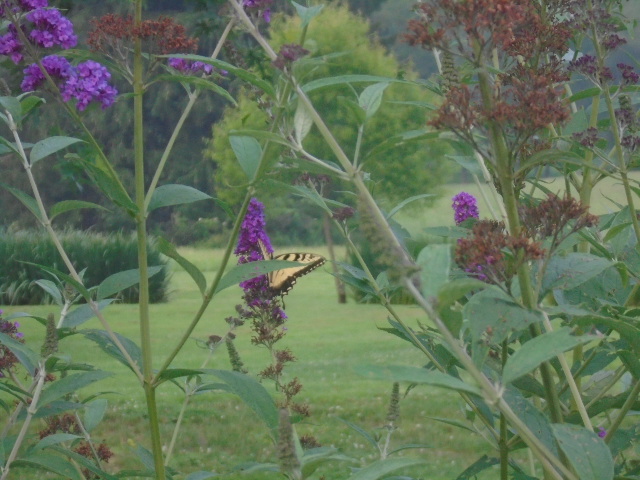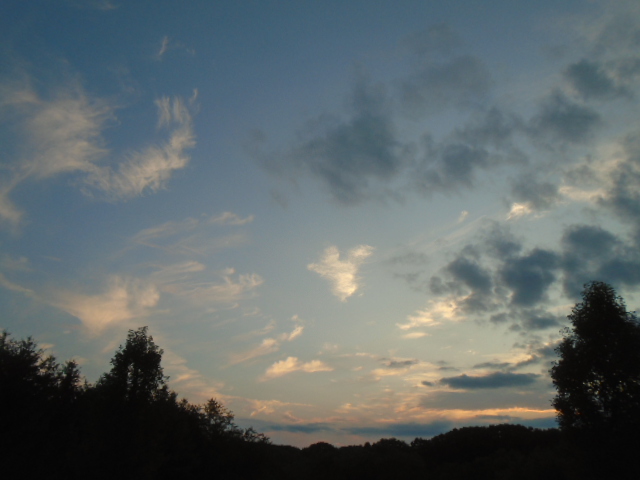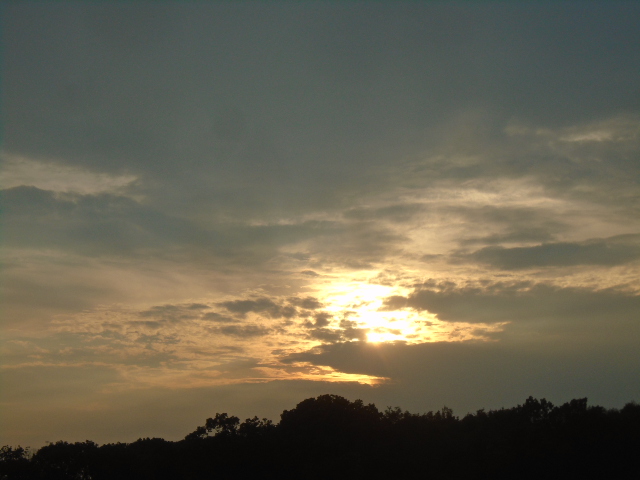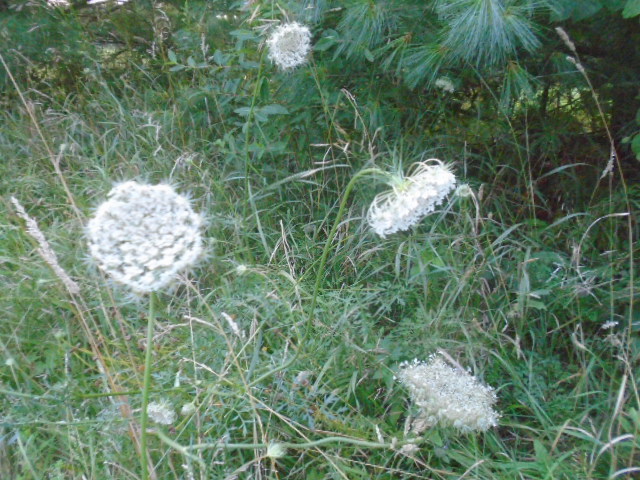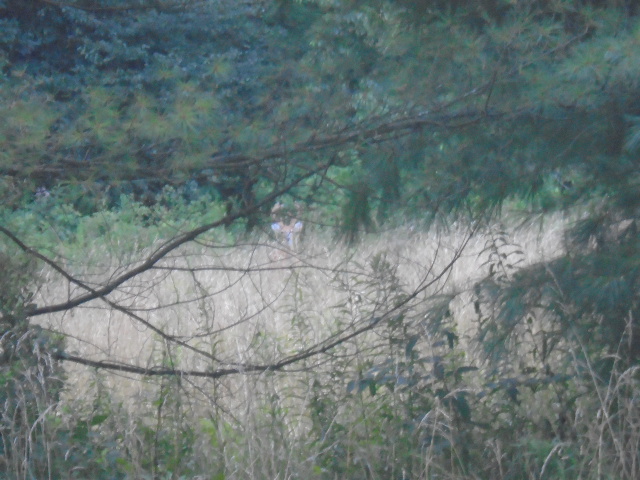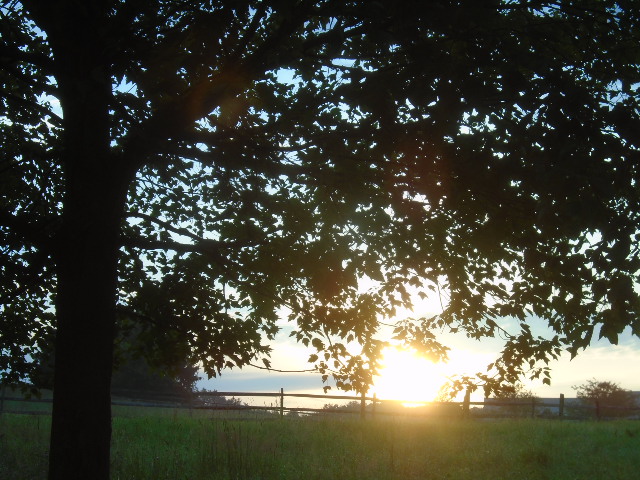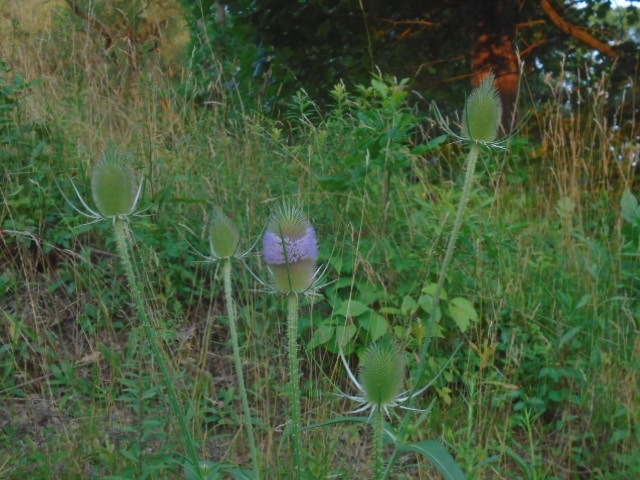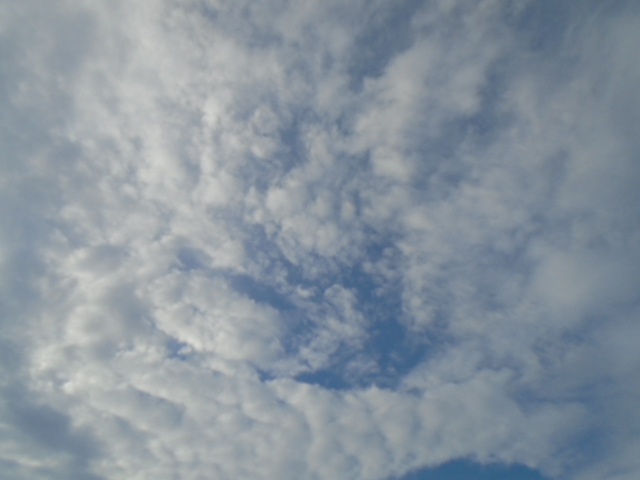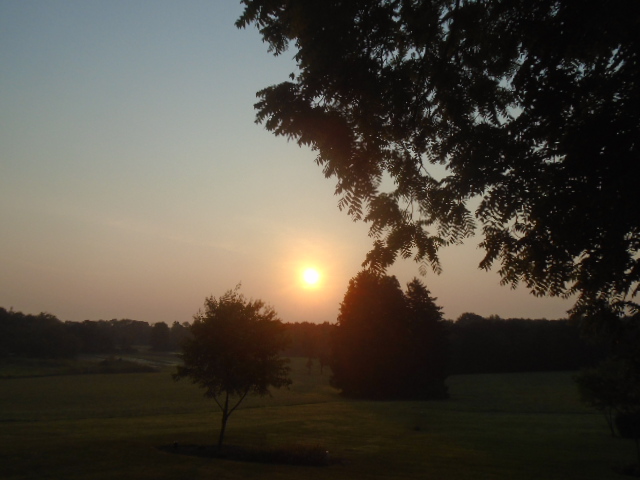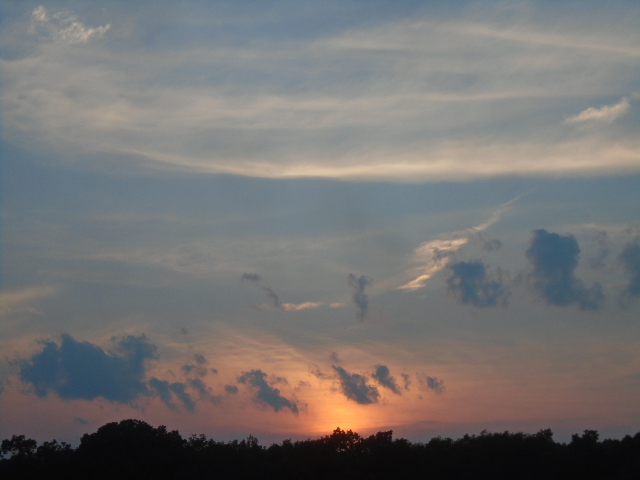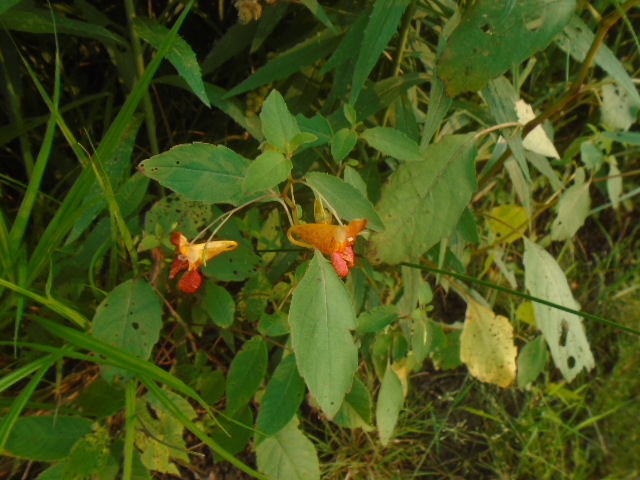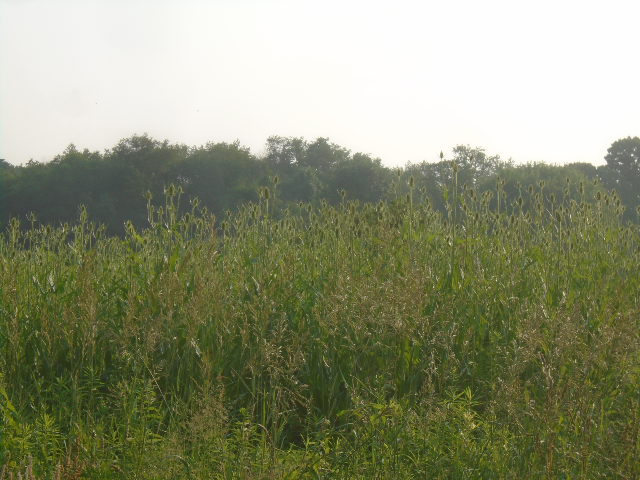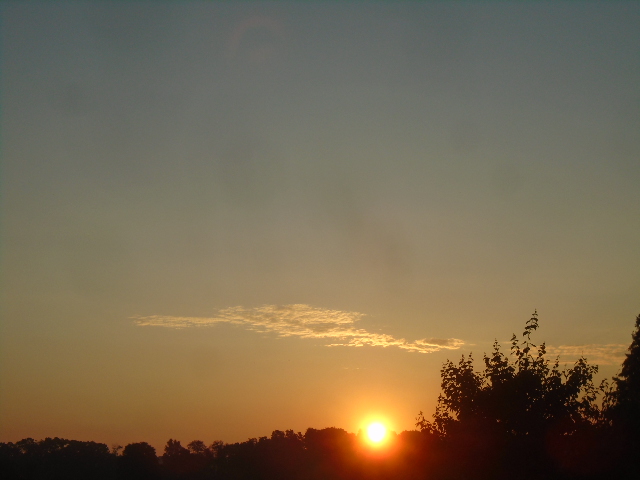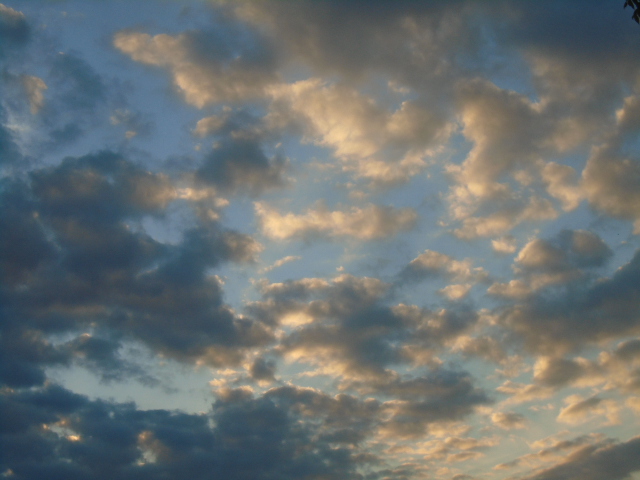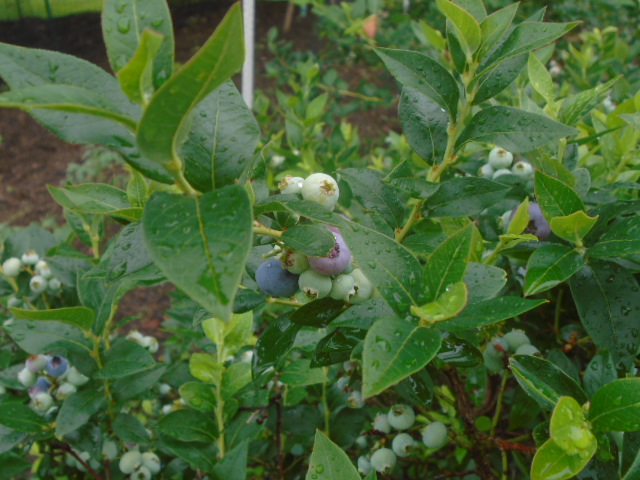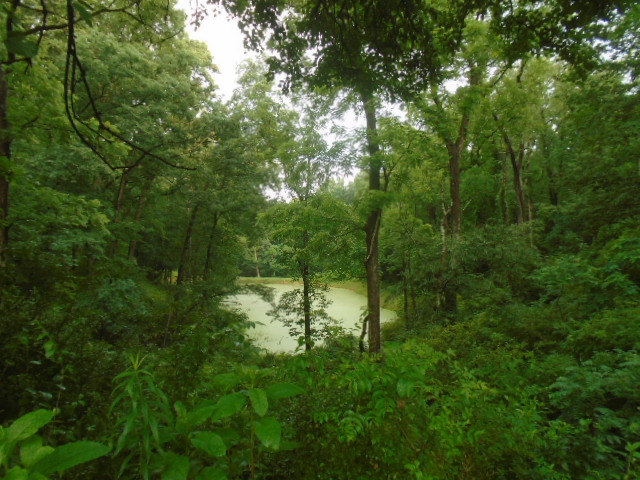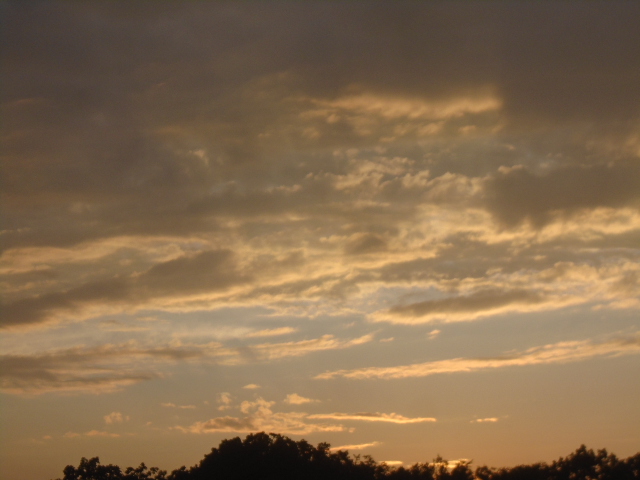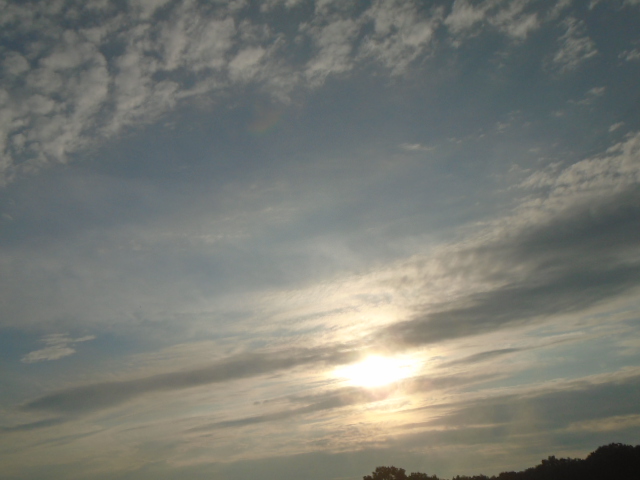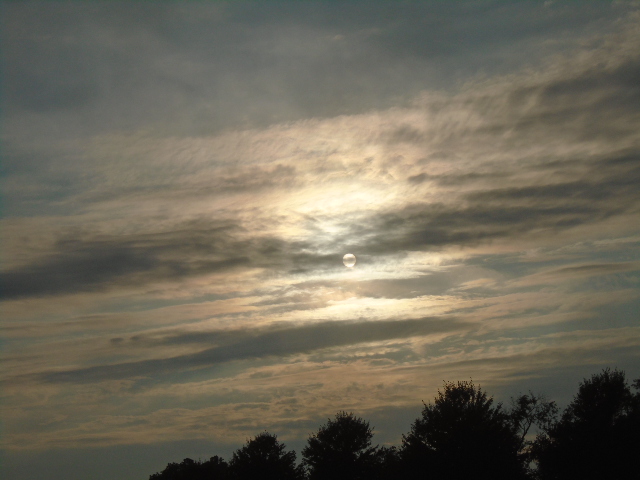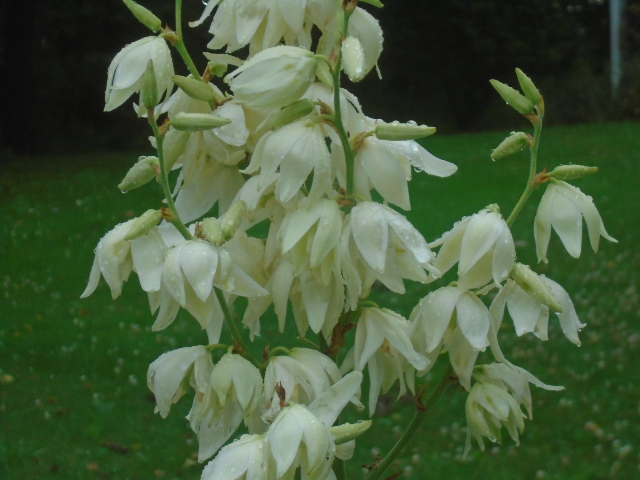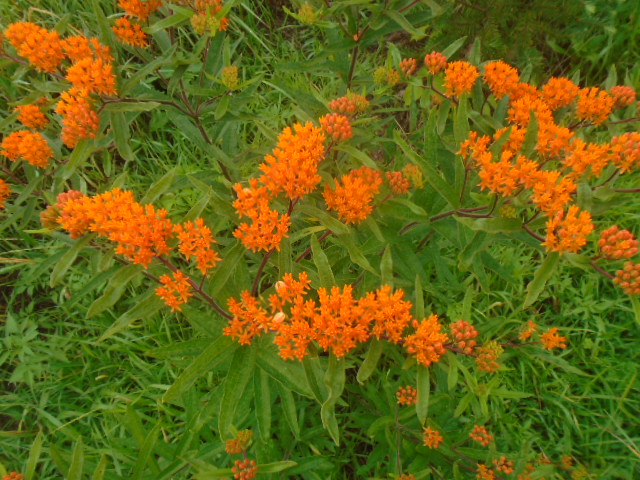
Nature continues to amaze us with the variety of trees, plants, flowers, and sights in the skies. Whether we are outside walking, doing yard work, or conducting some other activity, nature is right there with us, leading the way with unspoken encouraging words through the landscape around us. Seeing how the flowers and trees have grown since early spring is a reminder of how much change goes on in the world on a daily basis. These transitions take us along with them, often without us even noticing. By going along for the ride, we ourselves are transformed, often times earning or simply finding ourselves in a different state than we were prior. Summer is historically a time of such transitions with many youngsters learning and growing in ways away from those of formal education. Oftentimes, these learnings are rites of passage so to speak, or admissions to new realms in life. We thought we’d share some observations we made on this subject in this week’s post.
“If I were to wish for anything, I should not wish for wealth and power, but for the passionate sense of the potential, for the eye which, ever young and ardent, sees the possible. Pleasure disappoints, possibility never.” –Soren Kierkegaard
Theme of the Week: Changes Seen and Unseen
Our theme of the week started on my Sunday morning run before church. I noticed the skies were darker longer, which meant I had to start out a little later than planned. The later start would put me on a very tight schedule to make it to church for 7:30 AM mass. I was well aware of this fact as I started out, and even contemplated going fewer miles to have enough time to get to church.
About three miles into my run, the eight-year-old in me got a little rebellious and convinced the adult in me to go with the original plan to run my normal route and let the chips fall where they may regarding getting to mass on time. The clearing skies, sunrise, singing birds, and wildflowers coming into bloom around me were so inviting, so peaceful, so amazingly wonderful to the mind, heart, and soul. I was convinced it was God’s way of confirming the eight-year-old’s plan. What other explanation could there be?
As I ran, thoughts about what I saw came to mind. There was so much in nature that I could write about or take pictures of to share with others. And the really cool part about all this is it is free save for our time to notice it. Now this thought really got me excited. What in life these days is truly free? Yet nature is right there in front of us 24/7/365. No subscription or annual fees. No wires, special devices, or equipment required. No gimmicks, sales tax, or hidden charges. There it is, plain and simple (yet to intricate and profound on some levels), right there to have and to hold with us. Wow.
Long story short, I stayed out for eight miles, had a wonderful run, became inspired and energized, and made it to church just as the opening hymn started. Worse things have happened in life.
There was a time, however, when I would have never taken the “risk” of being “late” for anything, never stopped long enough to notice what lies beneath the surface, or never analyzed the lesson to be had. What changed in or with me to allow me the experience I had that morning?
Well, for starters, I learned through experience that many of the things we fear in life are self-inflicted misconceptions that lead us to getting lost. While some of our fears may be well-founded at given points in life, they typically do not last forever. Something along the way leads us to a different perspective, time zone, or zip code, placing distance between us and the fear. This happens naturally, through living life. Yes, living life, really living it—the good, bad, beautiful, ugly, easy, hard, and everything in between—is part of nature.
In addition, if we have any inclination of faith whatsoever in our lives, we come around to letting it lead us. Letting faith lead us is not easy. It requires giving up control, giving in to the concepts of a different plan, and maybe even stepping out of our comfort zone. Faith takes care of faith regardless of the circumstances. Whether your name is Paul and you are in prison for believing in Jesus, or your name is Lisa and you are seemingly stuck in the darkness of depression with no obvious way out, faith will lead you where you need to be. The key to remember is faith takes its own route in its own time frame, just like God takes His own way in His time to reveal Himself to us.
What does faith have to do with nature and vice versa? Well, like faith, nature operates how it does the way it does on its own time. Faith often uses nature to facilitate and illustrate what it is trying to teach. Nature often leads us to questions that allow us to see faith at work. Nature is the tangible element that allows us to see, taste, touch, and hear the intangible elements of faith.
“Growing up in Christ is surely the most difficult, courageous, exhilarating, and eternally important work any of us will ever do.” –Susan Lenzkes
Lesson of the Week: Questioning Always Are We
My run that morning, along with how mass unfolded that day and other events in the week lead us to our lesson of the week. Obviously, my run made me ask many questions that day. During mass, the priest’s homily was about prayer and how it impacts our lives. The priest relayed a story about a woman whose grandfather offered her the experience of praying with him. This led in turn to a life altering experience for the woman, as well as a treasured memory that made her question her path in life. Many questions led the woman further on her faith journey, and she came to realize the power of prayer each day.
After mass, the new youth minister of the parish talked about plans for the youth program. He asked the congregation a number of questions about what we can do for the youth of the parish. While listening to him speak, I began to wonder if we are asking the right question or questions when it comes to helping youngsters. We as society keep asking what we more we can do for our young minds, hearts, and souls. Perhaps we should be asking what we can do with these youngsters. How many times in life has an experience with a person led you to a better way or mindset? Have you ever done an activity with a teacher, friend, parent, or some other individual that proved to be a treasured experience forming character and perspective beyond any measureable value? Perhaps the best thing we can do for others (be they young, old, or somewhere in between) is to be with them. Be present in any given moment, regardless of circumstances, sharing whatever emotion, news, or information with them. Perhaps allowing them to experience life as it is with all its ups and downs is the best gift we can offer, for if we allow them to experience life, we allow them also to experience God first hand, in person, in the here and now.
“Christ is with us and the warmth is contagious.” –Joni Eareckson Tada
Verse of the Week: James 1:17
Throughout our daily readings this week, we came upon a favorite verse several times. This verse reminds me very much of the teachings of my late Uncle Jim. Uncle Jim was as down-to-earth, common sense, here you go as they come. Always helping anyone in need, never really complaining (though sometimes emphasizing certain things in a factual manner), he was to me a modern day Jesus and St. James. He was an influential person in the lives of many, and most definitely influential in a very positive way in my life.
This verse ties the gifts of nature and life together and asks us to truly experience life with God:
“Every good and perfect gift is from above, coming down from the Father of the heavenly lights, who does not change like the shifting shadows.” –James 1:17
The verse also reminds me of the many things Uncle Jim did with me. Things like showing me what nature had to offer, playing baseball in the yard, riding bikes, climbing trees, eating cookies while telling stories at the kitchen table, and even cutting grass (him on the riding mower and me push mowing as a youngster). Though his sudden death at a young age made me wish I had done more with him, it also led me to cherish the things we did do together.
Though Uncle Jim was a faithful and spiritual person, he did not go to Sunday mass, but instead took walks in the woods to be alone with God and his thoughts. I suppose my Sunday morning runs at times are similar to Uncle Jim’s walks and talks with God. The connection is the togetherness with another in nature’s time and place.
“If you, too, will learn to wait upon God, to get alone with Him , and remain silent so that you can hear His voice when He is ready to speak to you, what a difference it will make In your life.” – Kay Arthur
Treats of the Week: Transitions in Nature Seen
Our treats of the week came through seeing several changes in nature. The shifting of the sun’s location in the skies above allows us for easier viewing of the sunrise and sunset at our house. Though we love summer’s long days and short nights, we often have to hike a bit to see the extents of the sun’s travel in the skies in June and early July. This week we noted we do not have to hike as far, which is most helpful given we are trying to show our new companion Lena her boundaries. Watching her grow in trust and faith in us has been a wonderful experience in God’s grace. It has also reinforced the importance of being with her to help her understand what she is seeing or experiencing.
Also this week, we saw a great number of deer in the fields and woods. The male deer are sporting antlers coated in thick velvet. The antlers are growing with time, and each male deer depending on age has a different rack formation. We found one buck with antlers shaped like a heart over his head. In all my years of watching this natural wonder, I had never seen such a formation before.
I also found some interesting formations in the Queen Anne’s Lace in bloom. Closer inspection of the blooms revealed some very tiny insects navigating along the flower petals. We have to do some more research to properly identify the insects, and doing this research together will help us learn and grow in several ways.
Additionally, I saw some bees on a teasel that piqued my interest. Each year for several years now, I’ve managed to get a good picture of a bee or bees clinging to a teasel head. I had been disappointed until tonight when the bees offered me the perfect opportunity to get a picture. Perhaps the waiting and searching I had to do this year is related to climate or pattern changes in the bees and where the teasels grow. While the answers to my questions remain unknown for certain, the experience with the teasels and the bees is still one for which I am grateful.
“Commit your activities to the Lord and your plans will be achieved.” –Proverbs 16:3
May our activities in and with nature lead us to our true callings in life. May the detours taken along the way be not viewed so much as roadblocks, but rather transitions to rites of passage or admission to lives rich in things money cannot buy.
Transitions
Buck in the pines, antlers shaped like a heart,
Bugle flowers on the trumpet vine cascading over the trellis arch,
Dove on the wire and woodpecker in the tree,
Beetle on the Queen Anne’s Lace climbing higher in the breeze,
Full moon above the valley below
All a sign of God’s love with His grace in tow
Calling forward the missions in life
Through the transitions of time.
Sun in the skies to the east and the west.
Water running in lines after the rains’ great quench,
Berries on the bushes and tomatoes on the plants,
All part of nature’s goods we may or may not understand,
Teasel and lily and burr thistle, too,
All standing like easels as the light comes through
Calling each one to its mission in life
Through the transitions of time.
July in the breeze, summer upon the air,
Hazy mornings beneath the skies great flares,
Morning mists that fade as the dewdrops glow,
Each one kissed by the rays of the sun’s show
As morning melts into noon
In the glory of the Lord through and through,
Calling us toward our missions to find
Through the transitions of time.
-Lisa A. Wisniewski
A Note of Thanks
Our thanks this week is for God’s grace and nature’s ways, both of which have led us to where we are today. We thank our readers for sticking with us through several transitions as we grow and explore life itself. Thanks also to our church community for offering us things to think about each week.
Lisa, Leo, and Lena

